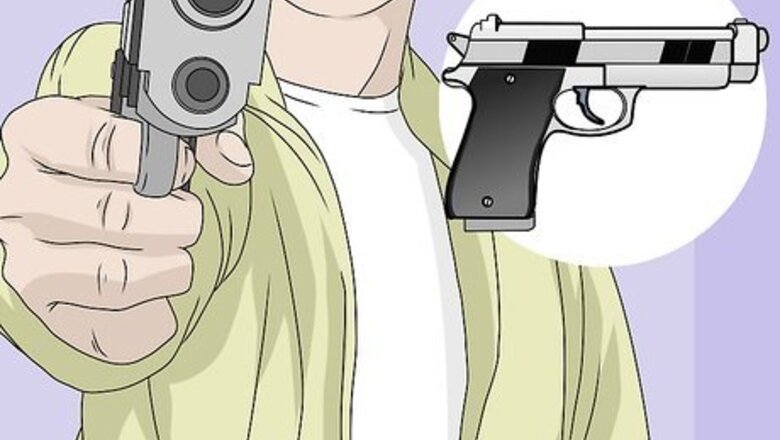
views
Understanding Pistol Basics
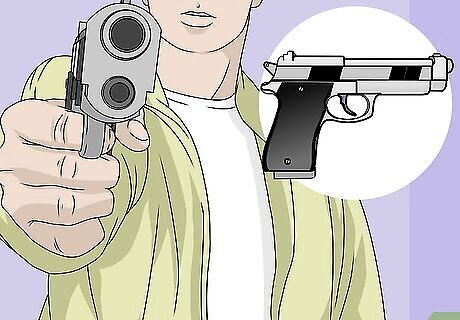
Consider your personal defense needs. Pistols are used almost exclusively for self-defense. Thus, you need to consider why you need the pistol and envision the places you intend to carry it. Do you plan on carrying it with you at all times, or is it staying in the house? Do you want something that will stop people and work as a crime deterrent, or do you want something with enough power to end the standoff violently? These decisions make a big difference on the size, shape, and type of pistol you choose. Think long and hard about whether or not you could ever pull the trigger on another human. It may seem like a good idea to pull the gun out without shooting to scare a criminal off. But, more often than not, a gun escalates the situation, and will make things much, much worse if you're not willing to shoot it.
Determine your basic point-shoot at the range before buying. You must find out how comfortably you can aim a gun before buying it. With an unloaded gun, close your eyes and point the gun in a safe direction with your finger next to the trigger, but not on it, at a makeshift target. Open your eyes — the sights should be lined up exactly where you wanted them. At five yards, it should be no more than a couple inches off center-target. If you're too low, try a lighter gun. Too high, you might want something heavier. If the handgun is pointing high or low, this can be compensated for with practice. For example, almost everyone who has never used a Glock before has a high point-shoot location by 6–10 inches (15.2–25.4 cm) at five yards. But with practice, you will find that you can compensate for that quickly. Sample a variety of guns whenever possible. You want the one that feels comfortable in your hand when shooting, or a "more accurate" model might not do you any good.
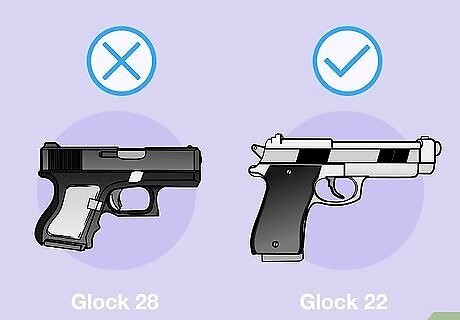
Choose a larger pistol for greater accuracy and range. Larger pistols are more accurate than smaller ones due to their fit to the hand, weight (reduced felt recoil), and longer sight plane. They are, however, much harder to conceal and carry, and the added weight may make them difficult to aim and maneuver for some people. Also called "combat pistols" or "duty-pistols." Most people will have greater success shooting a full sized pistol, as the recoil and fit often lead to a more comfortable shooting experience. The 1911, Glock 17 or 22, and Beretta M9 are all good examples of popular combat pistols.
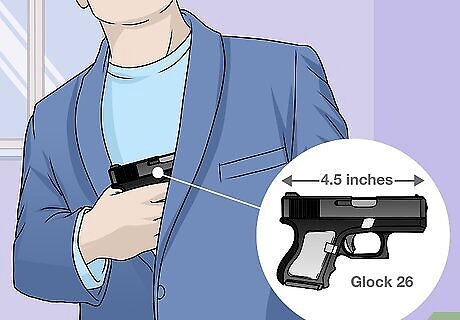
Choose a smaller pistol if you need to carry it on your person. Smaller pistols are easier to conceal and are lighter to carry, but they trade off some power and accuracy. However, because they are smaller they are often easier to aim, especially for smaller people. Conceal-carry guns have a length of 4.5-6 inches and are light and small. Often sold as "compact," "snubnose," or "conceal-carry" pistols. The Glock 26 or 27, Kahr PM9, and the Colt Mustang XSP are all highly rated conceal-carry guns.
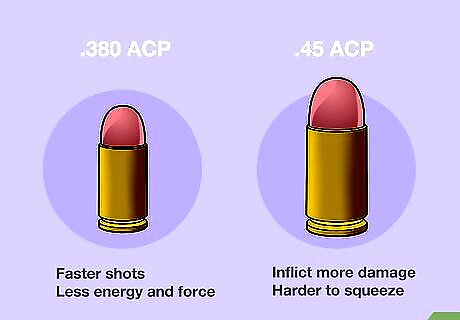
Know that chamber caliber matters as much as size when choosing a gun. The caliber bullet you're shooting does not change evenly with the size of the gun. Each caliber has it's own strengths and weaknesses, and you need to find one that fits your needs instead of just going for the highest number you can find. Beginners should aim for smaller calibers. Smaller calibers mean less recoil, which in turn means faster and more accurate follow-up shots, but generally less energy and force. A good starting point is .380 ACP caliber bullets, common in smaller pistols. Larger calibers inflict more damage per bullet, but are harder to squeeze multiple shots off quickly. Try out .45 ACP, 10mm, or .357 sig for a autoloader or a .357 Magnum or .41 mag for a revolver.
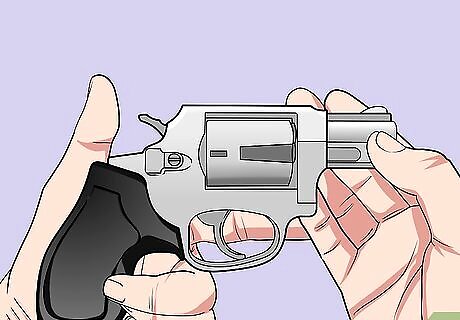
Know that revolvers are considered more reliable and simpler than semi-autos. A revolver is easy to load, point, and shoot, and have been popular options for decades. They are also easier to clean and maintain than most semi-automatics. That said, comfort holding and shooting should be your first concern when getting a pistol.
Shopping for Caliber Types
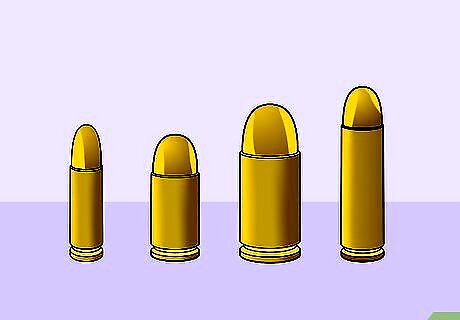
Consider both the benefits and drawbacks of each bullet type. Most people who study handgun bullet ballistics and tactics have concluded that handgun rounds are weak comparatively, and bullet-placement is a more reliable fight-stopper than the round itself. However, there are some advantages from one round to another, and knowing what caliber you're search for will help you make the most of your purchase. Penetration is extremely important. If a bullet does not penetrate deep enough, vital organs and the nervous system are less likely to be damaged. In the late '90s the FBI conducted extensive studies which suggest a bullet should penetrate at least 14–16 inches (35.6–40.6 cm) to be reliable. This allows for bullets to enter a body at less than optimal angles and still have enough energy to reach vital organs or the spine. Permanent cavity is the resulting "void" in a fleshy target where the majority of a bullet's energy was transferred and tissue was destroyed. The larger the permanent cavity, the greater the chance of vital organs or central nervous system being destroyed. Recoil is something that is often not talked about in bullet ballistics because it is a very subjective and weapon-specific characteristic. Low recoil allows you put place more shots quicker and more accurately. Each person will have a different feel for the recoil of a bullet, and each handgun will transfer the recoil to the user in different ways. Bullet energy is an over-emphasized feature of a round. In handguns, energy of bullets is extremely low. "Knock down power" is a fable born of Hollywood action movies scenes. People shot with a .22LR in non-vital areas have fallen down because they assumed being shot is synonymous with falling down and possibly dying.
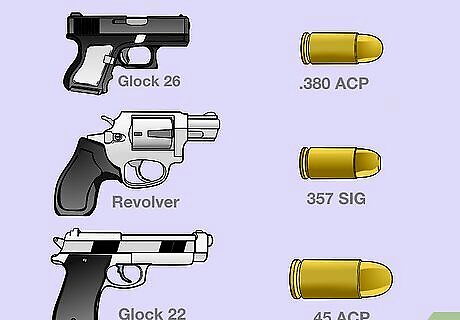
Understand the caliber of most common handgun bullets. There are a lot of different calibers out there, and it will be daunting for the uninitiated to figure out what to buy without a basic primer: 9mm Parabellum is the most common pistol caliber. Its relatively low recoil allows for quick, accurate follow up shots. The magazine capacity is usually much greater than other larger rounds. Cost is low and availability is excellent, making the 9mm an attractive choice for extended practice. Finally, there are excellent higher pressure (+P rated) loads available, producing excellent self-defense characteristics (make sure your handgun is rated to shoot +P loads before you use them). .45 ACP uses heavier, wider bullets than the 9mm at somewhat lower velocity. The caliber lends itself to use with sound suppressors due to the fact that a standard round (230 grain) is subsonic under almost all circumstances. The permanent cavity (on ballistics gel) of a JHP .45 is about 40% larger than JHP 9mm. Recoil is more severe than the 9mm, and magazine capacity tends to be much lower. Most law enforcement officers will say (referring to a point-blank gun fight), that if you don't hit them in the first three bullets, you aren't going to hit them. So a large capacity magazines mean less than you might think. .40 S&W is another common caliber with performance characteristics somewhere between the 9mm Para and .45 ACP. It has gained a large following in law enforcement agencies and elsewhere. Among other benefits of the round, the flat nose of the round has shown to create larger temporary cavities and also to allow the energy to transfer at a quicker rate create a sizable permanent cavity. .38 Special, .357 Magnum, and .44 Magnum are common revolver cartridges. The 357SIG (a 9mm bullet in a necked-down .40 cal casing) and 10mm Auto are also somewhat prevalent autoloader calibers. The 5.7x28mm is designed to defeat Class III body armor with appropriate ammunition. Such steel-tipped ammunition is not widely available to civilians, but the advantage of the round as a very low-recoil, high-velocity round cannot be denied.
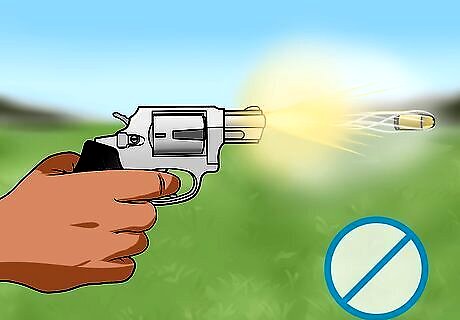
Disregard "knock-down power" when shopping for a pistol. Knock-down power in a pistol caliber is a complete farce. Newton's law says, "for every action there is an equal and opposite reaction" meaning that if the bullet had enough force to knockdown your target, firing the bullet would have enough force to knock you down. All this to say, one bullet is not guaranteed to knock a person down better than the other; it is more of a matter of who you are shooting, where you are shooting them, and whether or not this person has it in their mind that they should fall down when shot. Shot placement is much more important than the bullet size or energy.
Choose The Right Bullets
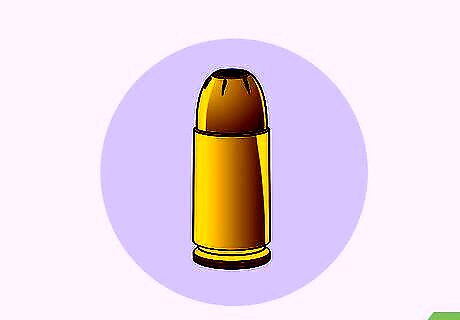
Use Jacketed hollow-point (JHP) bullets for self defense. JHPs are almost universally considered the best choice for defense ammunition. Other expanding designs such as Federal EFMJ and Cor-Bon DPX are also considered effective. A trade-off with hollow-point rounds is that, when the round expands, it creates a larger permanent and temporary cavity. However, because of the faster energy transfer it reduces the penetration depth. Soft-tip JHP is a vague description for any type of JHP which has a filling in the hole (it may be polymer or other hard material). This allows the bullet to pierce some objects or to travel through soft things (like clothes or flesh) for a period of time before opening up, allowing for deeper penetration. There are alternate names for such bullets, like ballistic-tip or V-Max. This is arguably the most versatile bullet. It will easily penetrate heavy clothing while retaining its ability to expand in a soft target.
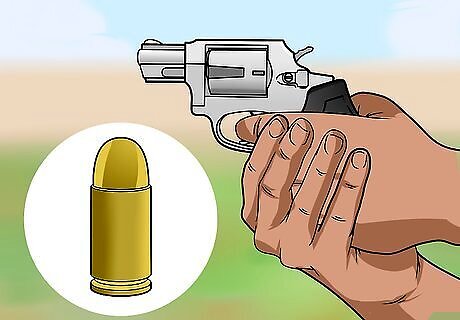
Test out solid FMJ (Full Metal Jacket) bullets for better target penetration. Solid FMJ bullets do not have the problem of losing their energy as quick and are known for penetrating through barriers and still piercing deep enough into flesh to arrive at vital organs. The permanent cavity is reduced in size (compared to JHPs), but there are trade off to every bullet. FMJs are often used for target practice. Federal Hydra-shok is a bullet which looks like a standard JHP from many angles, but inside the front cavity there is a "spear". This allows the bullet to open up and still pierce through some things. When it was first created this design led the industry, but most will say that improved standard JHP designs have since caught up. Reverse-tapered hollow point is a unique kind of bullet. The hole in the bullet increases in diameter as it descends through the bullet. The design allows for some penetration through hard objects without opening. When the bullet does open it folds open into separate sections which are held together by the jacketing.

Consider the weight of the bullet. In general, lighter bullets have higher velocities than heavier ones, so over shorter distances (less than 100 yards) lighter bullets have flatter trajectories. The problem with light bullets is that against soft targets they lose their energy with less resistance than heavier bullets. It has been proven that extremely light bullets can even be stopped by very heavy clothing. A light 9mm bullet would be 100 grains. And a heavy bullet would be 147 grains (though 124/125 gr. is more common). A light .40 would be 135 grains, and heavy .40 would be 180 grains. A light .45 would be 165 grains. But a 230 grain would likely be better for almost any purpose in a .45; even heavier bullets such as 250 grain are also available.
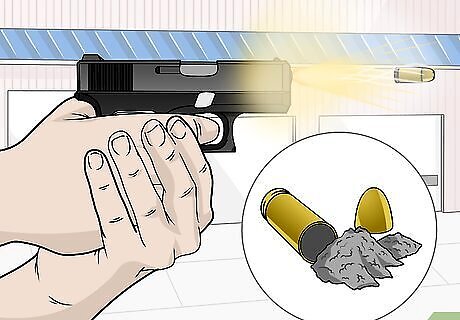
Know that powder loads can change a bullet's ballistics and the gun's feel. Standard loads are always recommended for most guns, but some guns like Glock and H&K specify the ability to fire hot loads. Most H&K pistols come with a dual-stage recoil spring which helps with felt recoil as well as recoil shock to internal components. This allows H&K to shoot +P (hot powder load) and +P+ (very hot powder load) without a problem. Other guns may need a spring replacement or other changes. The hotter loads allow for more muzzle energy and velocity as well as better reliability since the slide will be racked harder with the extra energy (less chance of limp-writing or stovepipes).
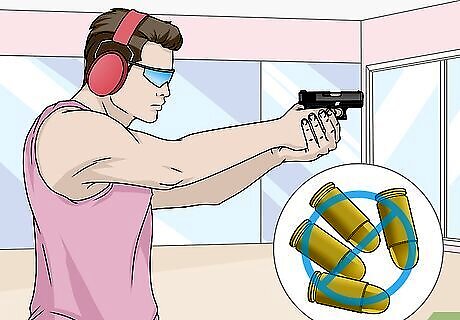
Avoid shooting with the ammunition you intend to use for self-defense, as it can get expensive. You should fire many of your "specialty" rounds to make sure the firearm cycles reliably with them. Some pistols are picky about certain JHP bullet shapes. For general practice you can use FMJ for cheap practice rounds, but consider using the same weight (grains) bullets and, if possible, the same load (Standard, +P, etc). This is because rapid-fire cycles can change drastically with different weight and loads.
Buying Pistol Accessories
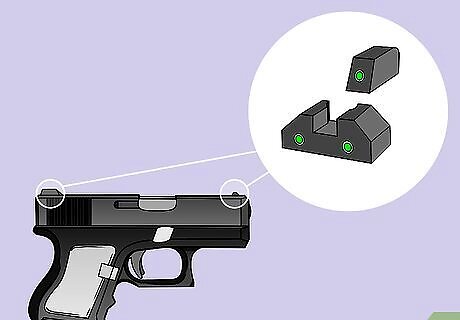
Get night sights for any conceal carry or duty weapon that you plan on using after dark. It allows the user to sight up targets in low- or no-light situations. The problem with any night sights used in nearing dusk, or early morning, when there is not enough light to adequately illuminate the white rings, and it is too bright to see the tritium, at this point the sights are very difficult to accurately line up. But any darker (when most shootings take place) the night sights are very visible.
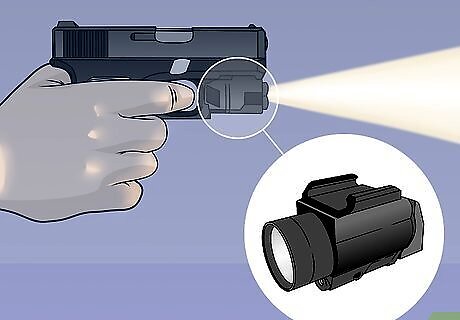
Consider getting a tactical, attached light. Tactical, attached lights not only are able to light whole rooms, but can also give bad guys a short period of blindness if used on them. The problem is that they add weight to the gun, and can possibly throw off the balance. Some argue that they also give the bad guy a nice easy target to aim at (but honestly, just try looking at the light for a few seconds — they may know the direction to shoot, but they won't see what they are shooting at). Buying a cheaper light will almost guarantee it breaking after a while. For a duty or concealed weapon, this can be left off, but for home defense use, it may help identify your target before taking action. A separate hand-held light can do most of what an attached light can do.
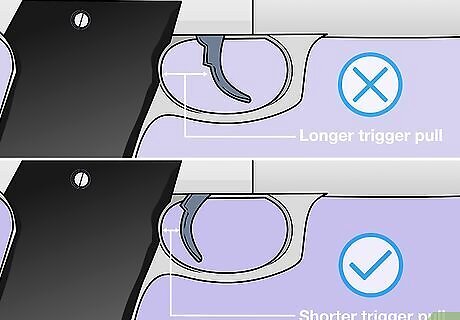
Consider getting trigger work to fire rounds faster. Often lightening the trigger pull, or shortening the length of the pull. This is great for target shooting or match shooting, but a trigger pull that is less than three pounds can quickly become unsafe if you are carrying the gun a lot. It can also help a lot with quick follow up shots, making them more accurate. This is a change that should only be made to the gun if the trigger pull is grossly heavy or long.
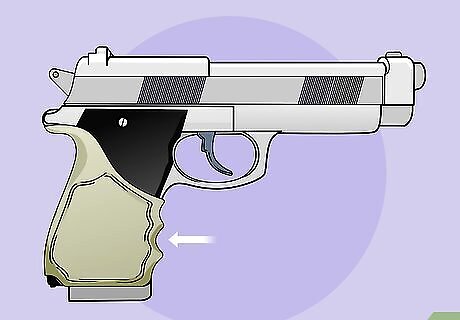
Consider a new rubber grip for comfort. For people with very large hands, this is a must to allow for a solid fit on the grip. The grips have problems though. They can move, affecting accuracy and requiring constant adjustment. Most tactical-style handguns have grooves and hatches in the grip to allow a firm grip even with sweaty hands; the rubber makes the gun a bit slippery when sweaty. Additional maintenance is also required, as sweat and dirt will build up under the grip, which require the rubber to be taken off and the grip and rubber washed thoroughly.




















Comments
0 comment